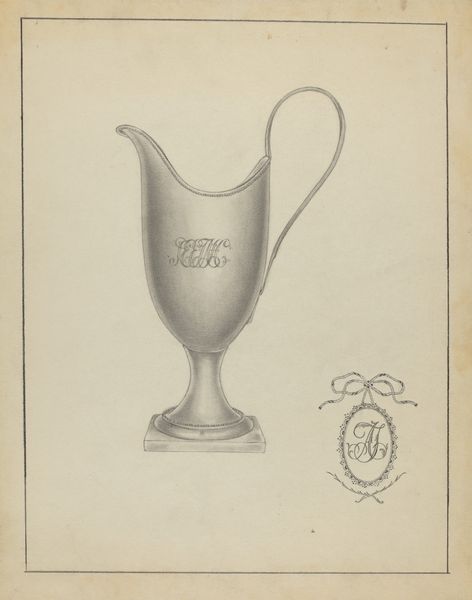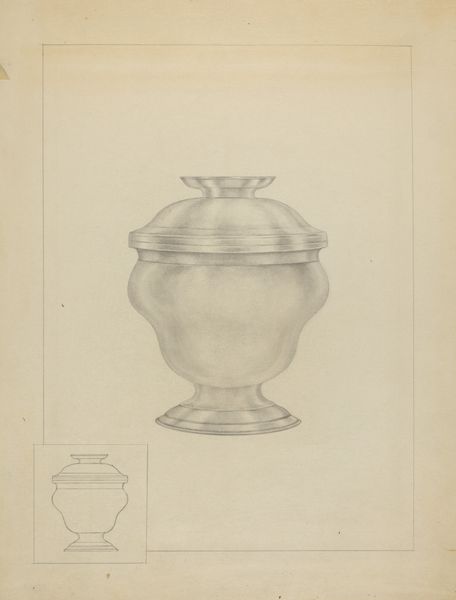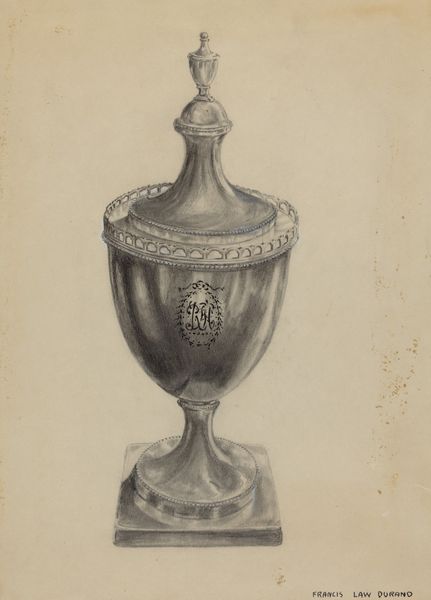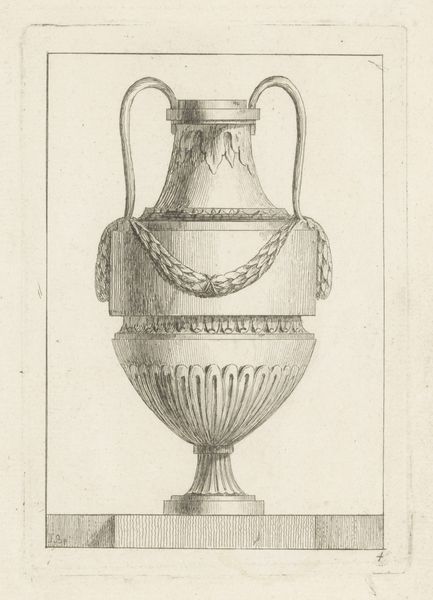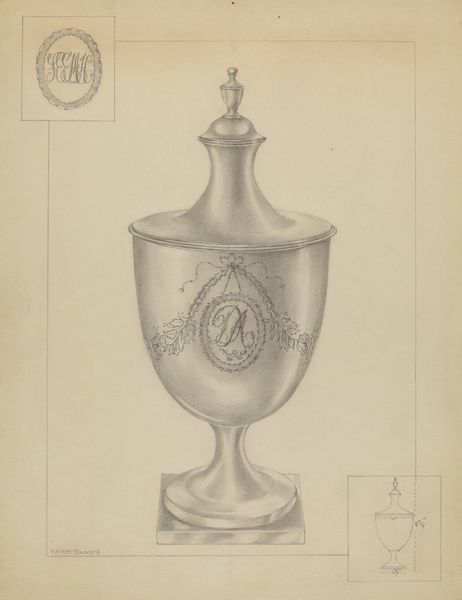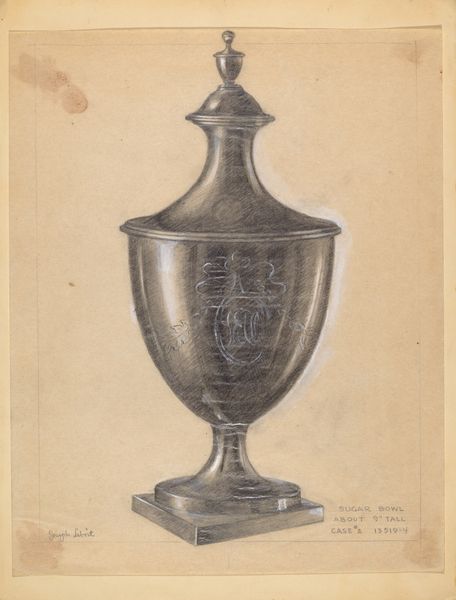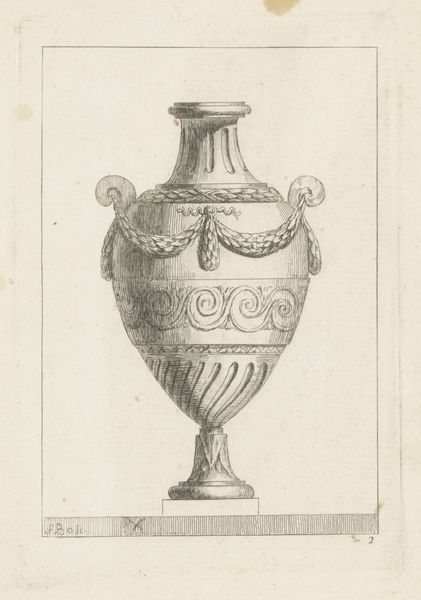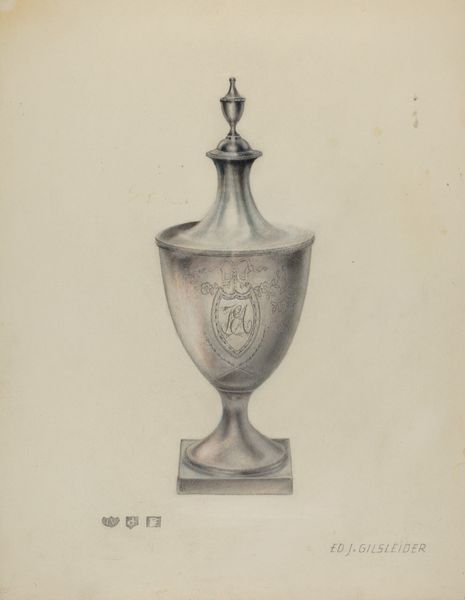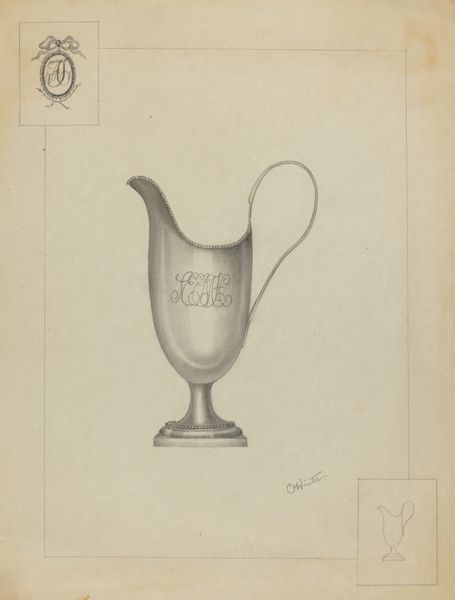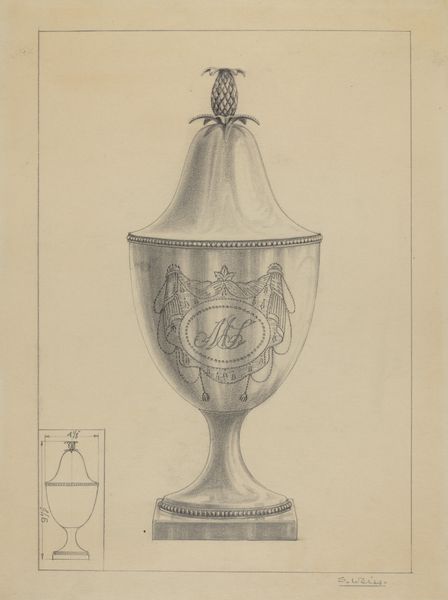
drawing, pencil
#
drawing
#
geometric
#
pencil
Dimensions: overall: 29.1 x 23 cm (11 7/16 x 9 1/16 in.) Original IAD Object: 9 1/8" high
Copyright: National Gallery of Art: CC0 1.0
Curator: This is a design drawing for a Silver Sugar Bowl, crafted around 1937 by Hester Duany. The medium used is pencil. Editor: It possesses an ethereal quality, wouldn't you say? There is an almost haunting delicateness to the way the metal is rendered in pencil; very tentative, very quiet. Curator: The work appears to showcase several geometric patterns which structure the design—observe the harmonious convergence of circles, ovals and the elongated form of the sugar bowl itself. This structure generates visual consonance throughout the work. Editor: Right, and let's think about sugar bowls within the socio-political climate of the time. Sugar, historically tied to colonialism and slave labor, places this object within a larger system of oppression. This isn't just a simple vessel; it's a symbol of privilege and wealth accumulated through exploitation. Curator: Indeed. Considering Duany's composition further, the inscription upon the bowl is encased in an ovoid form adorned with vegetal designs, these semiotic codes contribute layers to our interpretation. Do these patterns augment or belie its functionality as an artifact for daily usage? Editor: It depends on whose daily usage we are discussing, doesn't it? The object becomes less about utility and more about performative display of a specific socio-economic standing, especially during the depression era when resources were unevenly distributed. Perhaps, there is an element of performative display here; these sugar bowls are symbols meant for the gaze of a particular elite. Curator: Intriguing perspective, what I initially regarded as pleasing geometric shapes are more deeply embedded in complex themes of colonial consumption, requiring nuanced reevaluation on the impact the sugar trade has exerted over generations and communities. Editor: Absolutely, and by examining objects like this within their historical contexts, we can unravel intricate systems of meaning and power. Art allows us to unpack these multifaceted narratives and question assumptions.
Comments
No comments
Be the first to comment and join the conversation on the ultimate creative platform.


